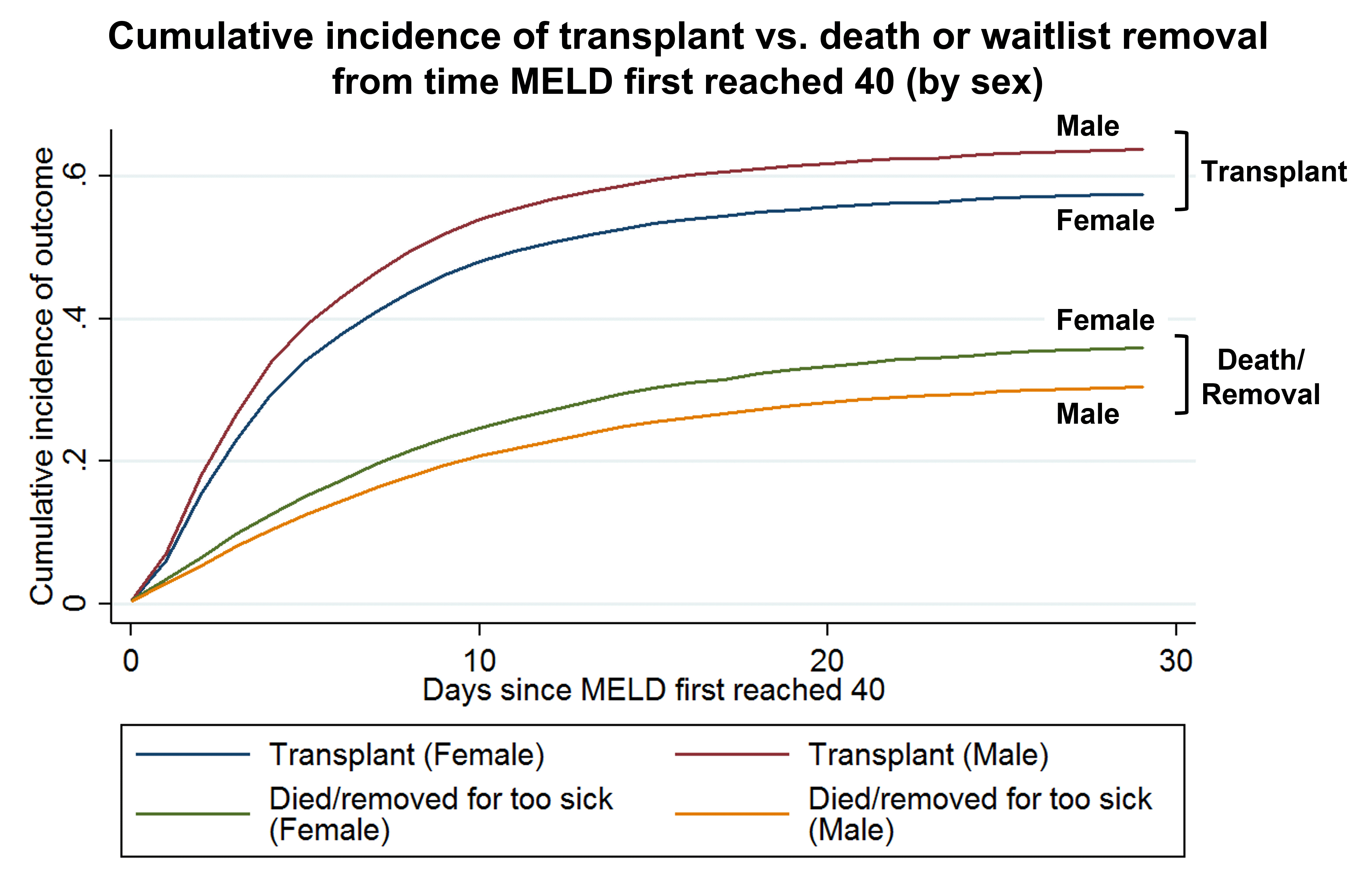Sex Disparities in Access to Liver Transplant for Waitlisted Patients with Meld 40
1Surgery, Massachusetts General Hospital, Boston, MA, 2Surgery, University of California San Francisco, San Francisco, CA, 3Surgery and Perioperative Care, University of Texas at Austin, Austin, TX
Meeting: 2022 American Transplant Congress
Abstract number: 319
Keywords: Allocation, Ethics, Liver transplantation, Waiting lists
Topic: Clinical Science » Liver » 60 - Liver: MELD Allocation*
Session Information
Session Name: MELD Allocation and Large Data
Session Type: Rapid Fire Oral Abstract
Date: Monday, June 6, 2022
Session Time: 5:30pm-7:00pm
 Presentation Time: 6:10pm-6:20pm
Presentation Time: 6:10pm-6:20pm
Location: Hynes Room 313
*Purpose: Women with end-stage liver disease are less likely than men to receive a liver transplant, due in part to MELD’s reliance on creatinine and overestimation of renal function in women. When the contribution of MELD is equalized, such as in patients with equally high MELD scores, the extent of the disparity remaining is unknown. We compared liver offer acceptance and waitlist outcomes for women and men with MELD 40 on the liver transplant waitlist.
*Methods: Using the SRTR registry and match run file, we identified waitlisted liver transplant candidates (age≥18) from 2009-2019 who reached MELD 40 (N=9,237). Primary exposure was candidate sex. Primary outcomes included 1) individual offer acceptance (offers received at match MELD 40); 2) transplant vs. death or removal for being too sick (competing events). Multivariable logistic and competing risks regression was used to estimate the association of sex with outcome and adjust for candidate and donor factors. We compared results with and without adjustment for candidate height and weight (which contributes to the disparity).
*Results: Women (40% of cohort), compared to men, spent more time active at MELD 40 (8 vs. 7 days, P=0.04), received more offers (7 vs. 6, P=0.01), but had a lower offer acceptance rate (8% vs. 10.0%, P<0.01). Adjusting for candidate and donor factors, offers to women were less likely to be accepted (OR=0.83, P<0.01; with size adjustment: OR=0.87, P<0.01). Adjusting for candidate factors, once they reached MELD 40, women were less likely to be transplanted (subdistribution hazard ratio[SHR]=0.86, P<0.01; size adjustment: SHR=0.92, P=0.04) and more likely to die or be removed from waitlist (SHR=1.17, P<0.01; size adjustment: SHR=1.06, P=0.06). The figure shows lower transplant rate and higher death/removal rate for women vs. men (both P<0.01).
*Conclusions: Even among the sickest candidates with the same MELD score, women receive less liver offers, are less likely to be transplanted, and more likely to die or be removed from the waitlist compared to men. This disparity is attenuated in magnitude but still present after accounting for candidate size. Policies addressing this disparity will need to consider factors beyond sex or size adjustments to MELD score.
To cite this abstract in AMA style:
Cron DC, Yeh H, Braun HJ, Ascher NL, Chang DC, Adler JT. Sex Disparities in Access to Liver Transplant for Waitlisted Patients with Meld 40 [abstract]. Am J Transplant. 2022; 22 (suppl 3). https://atcmeetingabstracts.com/abstract/sex-disparities-in-access-to-liver-transplant-for-waitlisted-patients-with-meld-40/. Accessed December 25, 2025.« Back to 2022 American Transplant Congress

